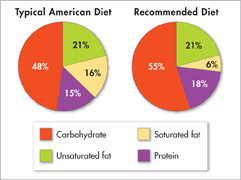30 Assessment
30.1 Organization of the Human Body
Understand Key Concepts
The type of tissue that covers the body, lines internal surfaces, and forms glands is
muscle tissue.
connective tissue.
epithelial tissue.
nervous tissue.
The process of maintaining a relatively constant internal environment despite changes in the external environment is called
regulation.
homeostasis.
synapse.
stimulation.
What do all types of tissue have in common?
They are all made of connective tissue.
They are all made of cells.
They are all found in every organ.
They are all made of organs.
Why is it important for an organism to maintain homeostasis?
Name the four types of tissues and describe one characteristic of each.
Think Critically
Would you classify blood as a cell, a tissue, or an organ? Explain. Predict Infections may lead to an immune response that results in a high fever. Considering what you have learned about the action of enzymes, predict what may happen if a person's body temperature remains abnormally high.
30.2 Food and Nutrition
Understand Key Concepts
Energy in food is measured in
ATP.
fats.
Calories.
disaccharides.
Inorganic nutrients that your body needs, usually in small amounts, are called
vitamins.
minerals.
proteins.
amino acids.
Which nutrients provide the body with energy?
In what three ways are proteins important to the body?
Think Critically
Infer Many food manufacturers have replaced trans fats in their foods with other types of fats that may not have the same level of heart disease risk. Some nutritionists fear that people will think foods such as French fries, doughnuts, and cookies are healthfol if they are not made with trans fats. Explain why these foods are still not healthfol choices.
Calculate If a person consumed 2000 Calories while following the typical diet, how many more of those Calories would be from saturated fat than if they were following the recommended diet?

320
200
120
100
30.3 The Digestive System
Understand Key Concepts
the esophagus
the large intestine
the mouth
the small intestine
An enzyme in saliva that can break the chemical bonds in starch is
pepsin.
bile.
amylase.
chyme.
Table of Contents
- Formulas and Equations
- Applying Formulas and Equations
- Mean, Median, and Mode
- Estimation
- Using Measurements in Calculations
- Effects of Measurement Errors
- Accuracy
- Precision
- Comparing Accuracy and Precision
- Significant Figures
- Calculating With Significant Figures
- Scientific Notation
- Calculating With Scientific Notation
- Dimensional Analysis
- Applying Dimensional Analysis





